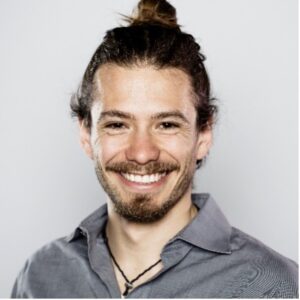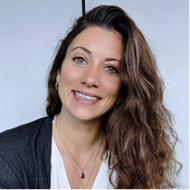During a research visit to Côte d’Ivoire, we spoke with around 200 smallholder cocoa farmers about their perception of agroforestry and learned about very different perspectives on sustainable cocoa farming. The following stories of Daouda and Aya (fictional names) are based on these conversations and provide insight into the different points of view and realities of farmers' lives. Daouda and Aya live in a remote village at Côte d’Ivoire’s border to Ghana. They are neighbours and cocoa farmers. However, their perspectives on sustainable cocoa couldn’t differ more.
Chocolate and Sustainability: The Stories of Two Cocoa Farmers in Côte d’Ivoire
Norina Furrer and Federico Cammelli, 23 March 2023
Cocoa, the raw material used to make chocolate, is mainly grown in West Africa, with Côte d’Ivoire being the largest cocoa producer in the world. While chocolate enjoys great popularity, especially in Switzerland with a per capita consumption of more than 10 kg per year, the cultivation of cocoa is associated with major social and environmental problems in the producing countries. Most of the world’s cocoa is grown by smallholder farmers, many of whom still live in poverty. Moreover, cocoa is pointed to as a major driver of deforestation in Côte d’Ivoire, with around 90% of tropical forests cleared during the last 60 years causing large carbon emissions and biodiversity losses. Climate change is expected to harm the cocoa sector through longer and more intense droughts and heat peaks which are likely to shrink the cocoa-suitable area, further exacerbating poverty and deforestation risk in neighbouring high-forested countries, such as Liberia.
Agroforestry, the incorporation of multipurpose shade and cocoa-trees, has been pursued as a win-win solution for farmers and the environment: restoring landscape connectivity, storing carbon and preserving biodiversity, while lowering the temperature for cocoa under the canopy, providing income diversification opportunities and increasing total system yield. To promote the adoption of shade trees and fight deforestation and poverty, cocoa companies coalesced under the Cocoa and Forest Initiative (CFI). However, more than a decade after the first agroforestry programmes and five years after the launching of the CFI, adoption of agroforestry is still low, and canopy cover is unlikely to increase.
During August and September 2022, we embarked on a trip to Côte d’Ivoire to understand how farmers perceive agroforestry and the programmes of the companies that promote it. From our conversations, we were able to identify different perception of agroforestry highlighting potential biases of current sustainability initiatives, that reduce their effectiveness and equity. We report on some farmers’ stories that are typical of what we observed and that summarise well some of what we have learned about the different perspectives and realities of farmers' lives.
During August and September 2022, we embarked on a trip to Côte d’Ivoire to understand how farmers perceive agroforestry and the programmes of the companies that promote it. From our conversations, we were able to identify different perception of agroforestry highlighting potential biases of current sustainability initiatives, that reduce their effectiveness and equity. We report on some farmers’ stories that are typical of what we observed and that summarise well some of what we have learned about the different perspectives and realities of farmers' lives.
In the West of the country, Daouda and his family have been living for decades on their customary land. They were among the early adopters of cocoa in the country. Daouda lives in the village close to his relative’s house, and he is affiliated with a cocoa-buying cooperative that offers sustainability programmes. The cooperative representative is a long-term friend always ready to help or supply credit in the form of advanced payments. Whenever shade seedlings are distributed, Daouda plants them according to his cooperative's training recommendations. He is aware of climate change and observed how weaker cocoa trees struggle to survive under the full sun during longer and hotter dry seasons. Shade trees reduce the temperature under the canopy and help cocoa to thrive, and offer additional income opportunities along with other benefits for everyone at the broader landscape scale.
Unlike Daouda, Aya and her husband are not as well established. Like many other migrants, they reached the village from the north of Côte d’Ivoire in search of work in the wake of the cocoa boom. While many migrant workers are employed in the fields of local farmers through sharecropping arrangements, Aya and her husband were able to lease the land they cultivate. On behalf of the landowner, they worked hard to convert pristine forests into productive fields and have been compensated with half of the planted land, but only for the duration of the cocoa lifecycle. They were also able to build a modest house on the land where they live, about 7 km away from the village. They go to the village seldom, only to join meetings of their ethnic community or to buy a bag of rice when they earn some money. Aya is not part of any cooperative. Instead, they sell their cocoa to pisteurs - middlemen who pick up Aya’s cocoa directly at the farm gate and can bargain the price.
When Daouda’s cooperative holds a meeting to inform about agroforestry, provide training, or distribute shade tree seedlings, Aya hardly hears about them. These meetings are only announced in the main village, only a few days in advance and in the local language rather than French. Besides, Aya and her husband wouldn’t see the point of spending a whole day travelling back and forth to the village to hear about something there is nothing to earn from. Their concern is the cocoa field and its productivity during this season. They heard some farmers are planting other trees amidst cocoa. They are curious about the reasons, but they wonder whether this may endanger their tenure agreement and revert the land to the landowner.
In the village there are also many sharecropper farm workers who are requested by their landlord to plant shade trees. However, they share Aya’s scepticism: trees and cocoa compete with each other, and they worry such competition would reduce the cocoa yield and shrink the part of the pie they earn from it. When the landlord doesn’t see, some of them eradicate the tree seedlings.
Unlike Daouda, Aya and her husband are not as well established. Like many other migrants, they reached the village from the north of Côte d’Ivoire in search of work in the wake of the cocoa boom. While many migrant workers are employed in the fields of local farmers through sharecropping arrangements, Aya and her husband were able to lease the land they cultivate. On behalf of the landowner, they worked hard to convert pristine forests into productive fields and have been compensated with half of the planted land, but only for the duration of the cocoa lifecycle. They were also able to build a modest house on the land where they live, about 7 km away from the village. They go to the village seldom, only to join meetings of their ethnic community or to buy a bag of rice when they earn some money. Aya is not part of any cooperative. Instead, they sell their cocoa to pisteurs - middlemen who pick up Aya’s cocoa directly at the farm gate and can bargain the price.
When Daouda’s cooperative holds a meeting to inform about agroforestry, provide training, or distribute shade tree seedlings, Aya hardly hears about them. These meetings are only announced in the main village, only a few days in advance and in the local language rather than French. Besides, Aya and her husband wouldn’t see the point of spending a whole day travelling back and forth to the village to hear about something there is nothing to earn from. Their concern is the cocoa field and its productivity during this season. They heard some farmers are planting other trees amidst cocoa. They are curious about the reasons, but they wonder whether this may endanger their tenure agreement and revert the land to the landowner.
In the village there are also many sharecropper farm workers who are requested by their landlord to plant shade trees. However, they share Aya’s scepticism: trees and cocoa compete with each other, and they worry such competition would reduce the cocoa yield and shrink the part of the pie they earn from it. When the landlord doesn’t see, some of them eradicate the tree seedlings.
The stories of Daouda and Aya tell us about opposite views on agroforestry, partly driven by the economic and power inequality within cocoa communities, which are replicated by agroforestry interventions, leading to different exposure to training and agroforestry programs. Most cocoa sustainability programmes work solely along the supply chain and with the buyer’s direct suppliers, and fail to engage landscape and community institutions that have the potential to reach all farmers. As a consequence such programmes risk to benefit only those farmers who are already better off, perpetuating marginalisation and jeopardising the programmes’ effectiveness.
During our field trip, we worked with farmers to co-create a different sustainability initiative that is more effective and equitable. Currently, we are discussing the initiatives with cocoa companies with the aim to operationalize and pilot the ideas received from the farmers, and to asses the impact of a new intervention in a randomised control trial.
During our field trip, we worked with farmers to co-create a different sustainability initiative that is more effective and equitable. Currently, we are discussing the initiatives with cocoa companies with the aim to operationalize and pilot the ideas received from the farmers, and to asses the impact of a new intervention in a randomised control trial.
About the Authors

Federico Cammelli
I am broadly fascinated by anything happening at the interface of society and nature. I use economic experiments, quasi-experimental methods and qualitative approaches to understand behavior and inform environmental policies. In the past I studied fires and smallholders' agriculture in the Brazilian Amazon with a focus on livelihood and degradation. At EPL I am investigating the effectiveness and equity of cattle and soy supply chain policies to halt deforestation and degradation in Brazil.

Norina Furrer
I am deeply invested in exploring the complex interplay between human behavior and sustainability, particularly in areas like climate adaptation, biodiversity, and livelihood sustainability. My research encompasses a combination of economic experiments, quasi-experimental methods, and qualitative insights to gain a comprehensive understanding of why people act as they do and how this can inform policy. I am currently working on projects that delve into the relationships between credit access, crime, and deforestation in Brazil, and the adoption of agroforestry practices among smallholder farmers in Côte d'Ivoire.















